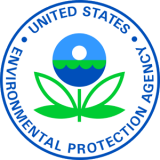EPA Region 7, Kansas and Nebraska Assess PFAS Contamination
Environmental News
FOR IMMEDIATE RELEASE

Aggressively addressing PFAS is an active and ongoing priority for EPA. In July alone, EPA has made significant progress implementing the PFAS Action Plan – the most comprehensive cross-agency plan ever to address an emerging chemical of concern.
“With federal technical assistance efforts underway across the country, the Trump administration is bringing much-needed support to state, tribal, and local governments as part of the Agency’s unprecedented efforts under the PFAS Action Plan,” said EPA Administrator Andrew Wheeler. “These partnerships allow for collaboration, encourage cutting-edge research, and information sharing – ensuring that our joint efforts are effective and protective of public health.”
“Staff from all Region 7 programs are collaborating with state partners to jointly tackle PFAS contamination at industrial, military and Superfund sites in Kansas and Nebraska,” said EPA Region 7 Administrator Jim Gulliford. “PFAS has been around since the 1940s, so solving this challenge requires the considerable collective capabilities of federal, state, tribe and local governments.”
EPA Region 7 staff, Air Force and Army environmental specialists, and the Kansas Department of Health and Environment (KDHE) and Nebraska Department of Environment and Energy (NDEE) staffs are working together to sample and assess PFAS contamination at military installations. So far, the efforts have included reviews at Fort Riley in Junction City, Kansas; McConnell Air Force Base (AFB) near Wichita, Kansas; and Offutt AFB in Bellevue, Nebraska.
At the Fort Riley Superfund Site, during spring 2020, environmental staff conducted a PFAS Site Inspection. EPA’s Regional Lab reviewed and provided data analysis for split samples collected by KDHE during the site inspection.
EPA’s Regional Lab also worked to review and validate data from a KDHE sampling event conducted earlier this month at McConnell AFB.
Offutt AFB environmental officials have been taking corrective action on a Resource Conservation and Recovery Act (RCRA) hazardous waste permit. Groundwater sampling for PFAS was planned site-wide through Air Force Base protocols and specifically includes a base firefighting training area. Offutt AFB and NDEE officials performed a screening level site inspection at several locations on Offutt where aqueous film-forming foams were historically used or stored. The sampling is scheduled to be completed this summer.
In addition to technical assistance, EPA Region 7 is also providing funding in support of state PFAS assessment efforts. NDEE is applying Pre-Remedial Cooperative Agreement funding to accomplish some of their PFAS assessment work. NDEE’s current focus is assessing sites with potential for impact to private or public drinking water supplies.
EPA also used funding for small businesses to work on solutions to PFAS pollution. In March 2020, EPA announced a $99,000 Small Business Innovation Research contract to AirLift Environmental LLC in Lincoln, Nebraska, to develop a remedial treatment to remove PFAS and associated co-contaminants from soil and groundwater.
EPA is just one of the federal agencies working to better understand PFAS chemistries, sample collection, compound identification and quantification, toxicities (including health effects in humans), fate and transport, occurrence and exposure, environmental removal and degradation, and treatment and disposal.
For more information about the EPA Office of Research and Development's PFAS research, visit EPA's website.
Background
PFAS (per- and polyfluoroalkyl substances) are a group of man-made chemicals that have been manufactured and used by a variety of industries since 1940. Common applications of PFAS include water and stain repellant materials, as well as fast-acting firefighting products. While the use of older variants of PFAS have been widely discontinued, legacy uses and a lack of commercially viable alternatives to certain public safety products (e.g. fire-fighting foams) have resulted in PFAS contamination in certain areas.
In 2019, EPA issued the PFAS Action Plan – the first multimedia, multi-program, national research, management, and risk communication plan to address an emerging chemical of concern like PFAS. The PFAS Action Plan outlines the tools EPA is developing to address PFAS in drinking water; identify and clean up PFAS contamination; expand monitoring of PFAS manufacturing; increase PFAS scientific research; and promote effective enforcement tools. Additionally, it outlines EPA’s commitment to take a wide variety of actions to address this emerging chemical of concern in both a short-term and long-term time frame.
# # #
Learn more about PFAS
Learn more about EPA Region 7
View all Region 7 news releases
Connect with EPA Region 7 on Facebook: www.facebook.com/eparegion7
Follow us on Twitter: @EPARegion7
